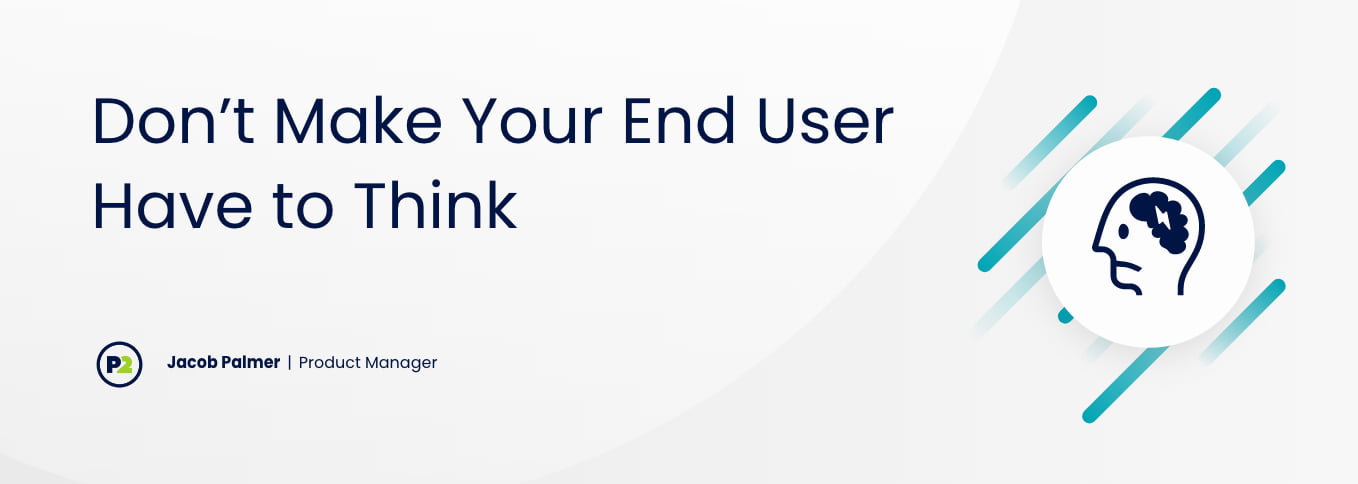
Don’t Make Your End User Have To Think
Scrum teams thrive on innovation and trying out new things, that’s not news to anyone in the industry. What might be understood, but not often talked about, is how enthusiastic our end users will be with our changes. However, they aren’t going to be enthusiastic if the changes are complex and take more thought than they are willing to give (which is usually not a lot).
Steve Krug, usability consultant and author of the timeless book, “Don’t Make Me Think” and “Don’t Make Me Think Revisited” has some tips on how to respond when the end user tells you they just want it “to work.” These books have incredible key takeaways that will benefit any scrum team trying to design and deliver apps to a broad user base.
1. If They Like It, Then You Build It
Starting from the very beginning is not only a good place to start, it’s also where you need to involve your target customers. How are you going to give your end users a thought-free experience without seeing how they react to your product? Fill your product backlog with attempts to address customer feedback, rather than build bells and whistles based on your own assumptions.
2. Different Isn’t Always Good… It Could Be Bad
It’s a simple saying, “different is good”. But, what you make different needs to improve upon the status quo.
Given the pace at which technology changes, your product will eventually need to be updated or improved. Maybe it’s a full overhaul or perhaps just a facelift. Either way is not a good excuse to move all your existing features and functions around (looking at you, Microsoft). Try to implement broad changes in separate phases over time, while making sure user disruption is significantly lower than what’s improved with your changes. Another great saying – “If it ain’t broke, don’t fix it.”
3. Easy Is Hard
Few people acknowledge this, but easy to use is hard to build. What is intuitive to you isn’t often going to be obvious to others. If your goal is ease, get ready to get your hands dirty, grow a thick skin, and throw out your favorite ideas. Users are people; people appreciate familiarity. There is no shame in using tried and true patterns in your software.
Challenge: make whatever you want your customer to do take no more than two steps.
This might seem reductive or even cliche at this point, but that’s only because it hits on a timeless idea; move the great stuff to the front. If buying a product on your app is hard, then that is your highest priority to address.
Believe it or not, even in the age of Amazon, there are sites where you can’t get what you want quickly. The end user’s frustration mounds when they see a product clearly available and intended to be sold to people like them, yet cannot successfully checkout. Even the most motivated customers will abandon their cart.
Don’t be that guy. Do the work. Make it easy.
4. Terminate the Tours
Krug claims that as users, “we don’t figure out how things work. We muddle through.”
We’ve clicked “no, thanks” on more guided tours than we care to count. Most users, probably including yourself, just want to get started. We don’t want to have to sit and hit next for an unknown number of steps. If you add a feature or change something, notify the end user as they work on related things or navigate to their target area from a more complicated route. Try to make these messages noticeable but not distracting.
How do you know if your messages are too distracting? Go back to number 1 on this list.
5. “Instructions must die.”
This quote comes directly from Krug. Do some aggressive pruning on your verbiage. If it needs to be explained, it’s too hard to use. When you show your product and find the need to explain, it’s time to load the chopping block.
Ask yourself:
“Is this absolutely necessary?”
“What could make this more obvious?”
“How can I make this self-explanatory?”
None of these questions are easy, but if the feature is important enough to include in your product, it’s worth the effort.
6. Decisions Are Hard
“We don’t make optimal choices. We satisfice,” says Krug.
We’re all in a big hurry. Often we’ll select the first reasonable choice rather than the optimal one. Decisions take energy, don’t drain your end user with making choices about where to go and what to do. Every new offering you create complicates your pitch and business processes. Offer great navigation upfront and allow customization as appropriate.
7. Single, Short, and Common
Using colloquialisms and jargon is a sure-fire way to get your customer thinking about where to go next, maybe to a competitor’s product. When titling your features, areas, and functions, you should include commonly-used, single, short words. If your company has open positions, call the area “Jobs” or “Careers” rather than “Employment Opportunities”.
It takes a lot of thought, creativity, and collaboration to build something that is easy to use. Your customers will give you bonus points in the form of referrals if you build something that delights. Don’t make your customers think, make them glad they found you.
